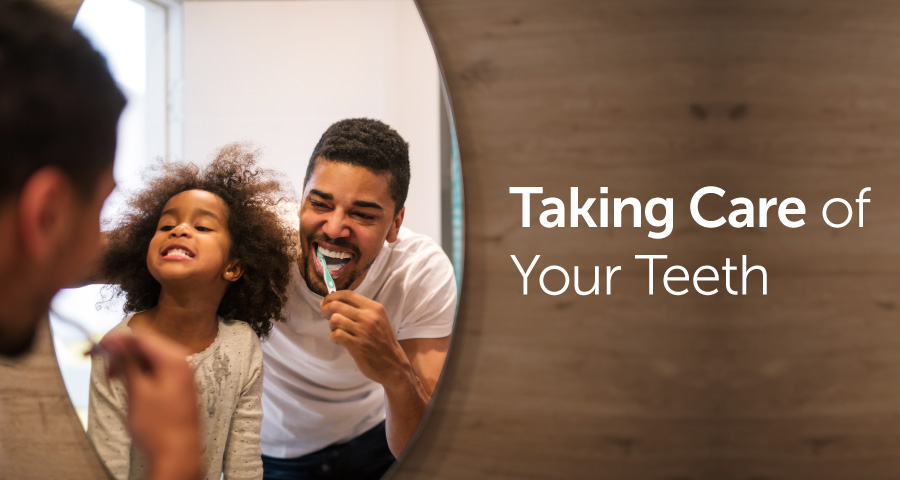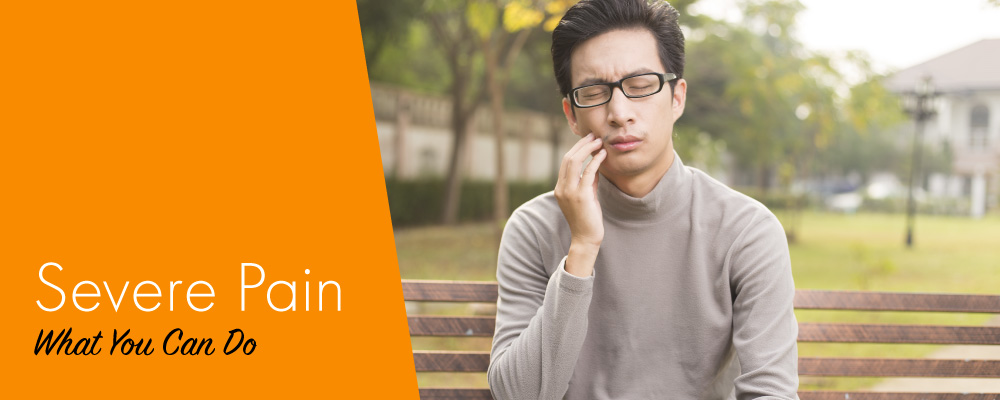
Teeth for a Lifetime
Thanks to better at-home care and in-office dental treatments, more people than ever before are keeping their teeth throughout their lives. Although some diseases and conditions can make dental disease and tooth loss more likely, most of us have a good deal of control over whether we keep our teeth into old age.The most important thing you can do to maintain good oral health is to brush and floss your teeth regularly.
Most mouth woes are caused by plaque, that sticky layer of microorganisms, food particles and other organic matter that forms on your teeth. Bacteria in plaque produce acids that cause cavities. Plaque also leads to periodontal (gum) disease, a potentially serious infection that can erode bone and destroy the tissues surrounding teeth.
The best defense is to remove plaque daily before it has a chance to build up and cause problems. Brushing removes plaque from the large surfaces of the teeth and, if done correctly, from just under the gums. Flossing removes plaque between teeth.
Brushing
Most of us learned to brush our teeth when we were children and have kept the same technique throughout our lives. Unfortunately, many of us learned the wrong way. Even if we learned the correct method, it's easy to become sloppy over the years. Brushing correctly isn't instinctive. Getting the bristles to remove plaque without damaging your gums is a little trickier than you might think.There are different ways to brush teeth, and your dentist or dental hygienist can show you the method that he or she feels would be best for you. The modified Bass technique is among the most popular for adults and is very effective in removing plaque above and just below the gum line. Children, however, may find it difficult to move the toothbrush this way. A dentist or dental hygienist can explain to your child the best way to brush. Parents should supervise their children's oral hygiene until age 9 or 10.
Here are a few general pointers about brushing:
- Brush at least twice a day: Many oral health professionals recommend brushing just before going to bed. When you sleep, saliva decreases, leaving the teeth more vulnerable to bacterial acids. Teeth should also be brushed in the morning, either before or after breakfast, depending on your schedule. After breakfast is ideal so food particles are removed. But if you eat in your car, at work or skip breakfast entirely, make sure you brush in the morning to get rid of the plaque that built up overnight.
- Brush no more than three times a day: Brushing after lunch will give you a good mid-day cleaning. Remember, though, that brushing too often can cause gums to recede over time. Brush lightly —Brushing too hard can cause gums to recede. Plaque attaches to teeth like jam sticks to a wooden spoon. It can't be totally removed by rinsing, but just a light brushing will do the trick. Once plaque has hardened into calculus (tartar), brushing can't remove it, so brushing harder won't help. Try holding your toothbrush the same way you hold a pen. This encourages a lighter stroke.
- Brush for at least two minutes: Set a timer if you have to, but don't skimp on brushing time. Longer is fine, but two minutes is the minimum time needed to adequately clean all your teeth. Many people brush for the length of a song on the radio. That acts as a good reminder to brush each tooth thoroughly.
- Have a standard routine for brushing: Try to brush your teeth in the same order every day. Some oral health professionals feel that this helps patients remember to brush all areas of their mouths. If you do this routinely, it eventually will become second nature. For example, brush the outer sides of your teeth from left to right across the top then move to the inside and brush rights to left. Repeat the pattern for your lower teeth.
- Always use a toothbrush with "soft" or "extra soft" bristles: The harder the brush, the greater the risk of harming gum tissue.
- Change your toothbrush regularly: As soon as the bristles begin to splay, the toothbrush loses its ability to clean properly. Throw away your old toothbrush after three months or when the bristles flare, whichever comes first. If you find your bristles flaring much sooner than three months, you may be brushing too hard. Try easing up.
- Electric is fine, but not always necessary: Electric or power-assisted toothbrushes are a fine alternative to manual brushes. They are especially useful for people who are less than diligent about proper brushing technique or for people with physical limitations that make brushing difficult. As with manual brushes, choose soft bristles, brush for at least two minutes and don't press too hard or you'll damage your gums.
- Choose the right toothpaste for you: It can be overwhelming to face the huge number of toothpaste choices in the average supermarket. Remember, the best toothpaste for you may not be the best toothpaste for someone else.
Toothpastes don't merely clean teeth anymore. Different types have special ingredients for preventing decay, plaque control, tartar control, whitening, gum care or desensitizing teeth.
Most toothpastes on the market today contain fluoride, which has been proven to prevent, stop or even reverse the decay process. Tartar-control toothpastes are useful for people who tend to build up tartar quickly, while someone who gets tooth stains may want a whitening toothpaste. Whitening toothpastes will remove only surface stains, such as those caused by smoking, tea or coffee. To whiten teeth that are stained at a deeper level, talk with your dentist.
Your needs will likely change as you get older, so don't be surprised if your hygienist recommends a type of toothpaste you haven't used before. Look for the ADA seal of approval, which assures that the toothpaste has met the standards set by the American Dental Association. Once these conditions are met, choose the toothpaste that tastes and feels best. Gel or paste, wintergreen or spearmint — these work alike, so let personal preference guide your decision.
Some people find that some toothpaste ingredients irritate their teeth, cheeks or lips. If your teeth have become more sensitive or your mouth is irritated after brushing, try changing toothpastes. If the problem continues, see your dentist.
Flossing
Many people never learned to floss as children. But flossing is critical to healthy gums and it's never too late to start. A common rule of thumb says that any difficult new habit becomes second nature after only three weeks. If you have difficulty figuring out what to do, ask your dentist or dental hygienist to give you a personal lesson.Here are a few general pointers about flossing:
- Floss once a day: Although there is no research to recommend an optimum number of times to floss, most dentists recommend a thorough flossing at least once a day. If you tend to get food trapped between teeth, flossing more often can help remove it.
- Take your time: Flossing requires a certain amount of dexterity and thought. Don't rush.
- Choose your own time: Although most people find that just before bed is an ideal time, many oral health professionals recommend flossing any time that is most convenient to ensure that you will continue to floss regularly. Choose a time during the day when you can floss without haste.
- Don't skimp on the floss: Use as much as you need to clean both sides of every tooth with a fresh section of floss. In fact, you may need to floss one tooth several times (using fresh sections of floss) to remove all the food debris. Although there has been no research, some professionals think reusing sections of floss may redistribute bacteria pulled off one tooth onto another tooth.
- Choose the type that works best for you: There are many different types of floss: waxed and unwaxed, flavored and unflavored, ribbon and thread. Try different varieties before settling on one. People with teeth that are closely spaced will find that waxed floss slides more easily into the tight space. There are tougher shred-resistant varieties that work well for people with rough edges that tend to catch and rip floss.
If you have any further questions regarding keeping your teeth healthy, please contact our Parkland dentist today!
- 7:25:00 PM
- 0 Comments

